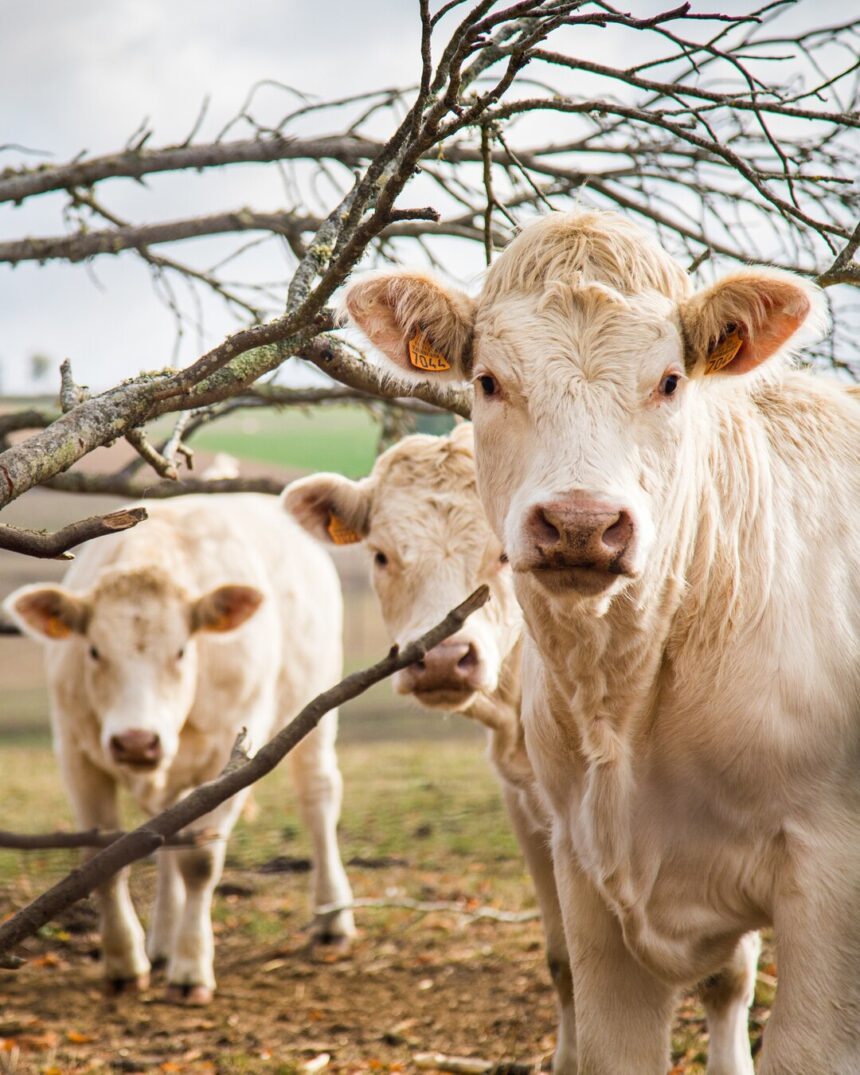Charolais cattle are renowned for their impressive size, muscle mass, and gentle temperament, making them a popular choice among cattle breeders in South Africa. With their origins in France, Charolais cattle have adapted well to South African conditions, thriving in various climates and terrain. For aspiring breeders and farmers interested in raising Charolais cattle, understanding key aspects of their breeding and farming is essential. In this article, we’ll delve into 10 essential insights into breeding and farming Charolais cattle in South Africa.
- History and Origin:
Charolais cattle originated in the Charolais region of France and were initially bred for draft work and meat production. They were introduced to South Africa in the early 20th century and have since become prized for their superior meat quality and adaptability to local conditions. - Characteristics:
Charolais cattle are known for their large frame, muscular build, and white to creamy-white coat color. They have a docile temperament, making them easy to handle, and are valued for their efficient feed conversion and high growth rates. - Meat Quality:
One of the main attractions of Charolais cattle is their exceptional meat quality. Charolais beef is renowned for its tenderness, marbling, and flavor, making it highly sought after by consumers and premium markets. - Adaptability:
Charolais cattle have proven to be adaptable to a wide range of climates and environments, from the lush pastures of the Eastern Cape to the arid plains of the Northern Cape. They thrive in both extensive and intensive farming systems, making them a versatile breed for South African farmers. - Breeding Objectives:
When breeding Charolais cattle, farmers typically focus on improving traits such as growth rate, muscling, and carcass quality. Selective breeding programs aim to produce progeny with superior genetics for meat production, ensuring profitability and sustainability in the beef industry. - Health and Welfare:
Maintaining the health and welfare of Charolais cattle is paramount for successful breeding and farming. Regular veterinary care, vaccination programs, and proper nutrition are essential for preventing diseases and promoting optimal growth and performance. - Grazing Management:
Charolais cattle are well-suited to grazing systems and can thrive on a diet of grass and forage. Effective grazing management practices, such as rotational grazing and pasture rotation, help maximize forage utilization and optimize herd health and productivity. - Reproduction and Calving:
Charolais cattle are known for their fertility and ease of calving, with cows typically producing large, vigorous calves without assistance. Proper reproductive management, including bull selection, estrus synchronization, and pregnancy testing, is crucial for maximizing breeding efficiency and herd profitability. - Marketing and Sales:
Marketing Charolais cattle and their offspring requires a strategic approach to target the right buyers and markets. Participating in breed shows, auctions, and marketing programs can help farmers showcase the quality of their Charolais genetics and attract potential buyers. - Industry Associations:
Joining industry associations and breed societies, such as the South African Charolais Cattle Breeders’ Society, provides farmers with access to valuable resources, networking opportunities, and technical support. These associations play a vital role in promoting the breed, advancing genetic improvement, and supporting the interests of Charolais breeders in South Africa.
Breeding and farming Charolais cattle in South Africa offer numerous opportunities for aspiring farmers and breeders seeking a profitable and rewarding venture. By understanding the key insights outlined in this article, farmers can effectively manage their Charolais herds, optimize production, and contribute to the growth and sustainability of the beef industry in South Africa. With their impressive traits, adaptability, and market appeal, Charolais cattle continue to be a valuable asset to the agricultural landscape of the country.
Join 'Farmers Mag' WhatsApp Channel
Get the latest Farming news and tips delivered straight to your WhatsApp
CLICK HERE TO JOIN






